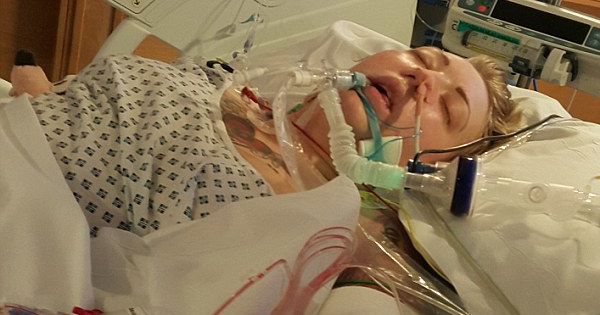Advertisement
Hannah Grimshaw had just gotten married when she started experiencing headaches and confusion.
“I was getting a bit confused about some things. I had only been married for a few weeks and I’d just started a new job, so I thought it was that,” she said. “It was silly things, like if I put shopping away I always put it in the same cupboard, but I was putting it in a cupboard that I didn’t even use.”
She just thought it was due to a busy week at work, but it all changed after one day.
She fell asleep after her shift, and woke up confused and aggressive.
Her husband couldn’t shake her out of it, he called an ambulance.
He was questioned as to whether or not his wife had been drinking or doing drugs, but he said that was unlikely.

She was put into a coma, because she was so confused. They brought her back after doing some tests, but she was so confused thy had to put her back in it again.
“The doctors told me that if she remained in that state, we would have to start looking at turning her life support and there was nothing they could do to bring her back,” said her husband.
Finally, doctors discovered she had a subarachnoid hemorrhage, a rare type of stroke caused by internal bleeding in her brain.
The stroke could have left her paralyzed or dead.
Hannah was given a 50 percent chance of survival, and her husband was told that even if she did wake up, she may end up paralyzed or brain damaged.
But after 5 days in her medically induced coma, she woke up, and it was if nothing had changed.

Doctors were baffled—the most common sufferers of this kind of stroke are smokers, drinkers, or those with high blood pressure. Hannah didn’t fit the bill.
Not only that, but her miraculous recovery was even more confusing.
But now, she’s back home, and less than a month after her brush with death, she’s back to normal.
“Everything stopped on its own—I didn’t have to have surgery or anything,” says Hannah. “It’s a miracle, and I’m so happy to be back at home.”
But she’s cautioning others about the risk of something so terrible happening at such a young age.
“If it can happen to a healthy 21-year-old, it can happen to anyone.”




